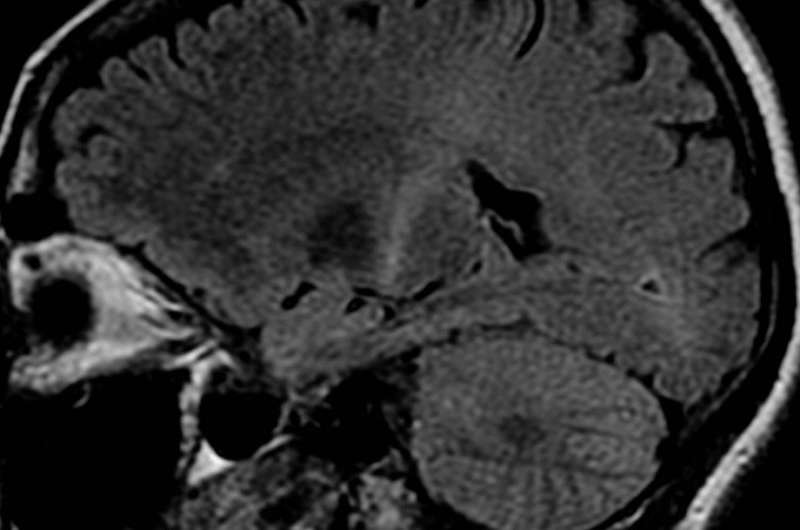Researchers discover critical RNA processing aberrations

Research by a Barrow Neurological Center scientist on mechanisms of dysfunctional RNA processing in ALS and frontaltemporal dementia (FTD) was published in the April issue of Acta Neuropathologica. The research was conducted by Dr. Rita Sattler and her graduate student Stephen Moore in her laboratory at the Department of Neurobiology at Barrow Neurological Institute, which is dedicated to understanding the mechanisms of disease in ALS, FTD and related neurodegenerative diseases.
The featured research discovers that a specific RNA processing protein, known as ADAR2, undergoes cellular mislocalization and is found in an unexpected region in neurons from postmortem ALS/FTD patient brain tissue. This altered cellular localization leads to dysfunctional RNA alterations, which impact critical disease pathways involved in neurodegeneration in the most common subgroup of ALS/FTD patients, those characterized by a mutation in the C9orf72 gene. These dysfunctions are likely to contribute to neuronal loss in other neurodegenerative diseases and could potentially be rescued by therapeutic intervention with compounds that prevent the cellular mislocalization of ADAR2.
"These findings emphasize the importance of RNA processing in ALS and FTD disease and suggest that therapeutics targeting the mislocalization of these RNA binding proteins might be beneficial for patients with neurodegenerative diseases," says Dr. Rita Sattler, Associate Professor of Neurobiology and Neurology at Barrow.
The research was conducted at Barrow, which is part of Dignity Health St. Joseph's Hospital and Medical Center, in close collaboration with TGen and other institutions across the country. Dr. Sattler and her team came to their results by examining the cellular localization of ADAR2 in varying models of disease followed by a transcriptome analysis of tissues and iPSCs using RNA sequencing technology. The data was analyzed for changes in RNA processing and compared to data obtained from healthy control volunteers.
The research was funded by the Barrow Neurological Foundation, the National Institute of Health, the ALS Association, the Muscular Dystrophy Association and the Robert Packard Center of ALS Research at Johns Hopkins University.
The eventual goal for this research is to test novel compounds that will prevent ADAR2 from changing its cellular localization, and thereby prevent the aberrations of RNA editing and improve neuronal health.
Future research is aimed at closely examining individual genes of the cellular pathways affected by the mislocalization of ADAR2 and the aberrant RNA editing. This could lead to the discovery of more specific novel therapeutic targets for patients with neurodegenerative diseases.
More information: Stephen Moore et al. ADAR2 mislocalization and widespread RNA editing aberrations in C9orf72-mediated ALS/FTD, Acta Neuropathologica (2019). DOI: 10.1007/s00401-019-01999-w













